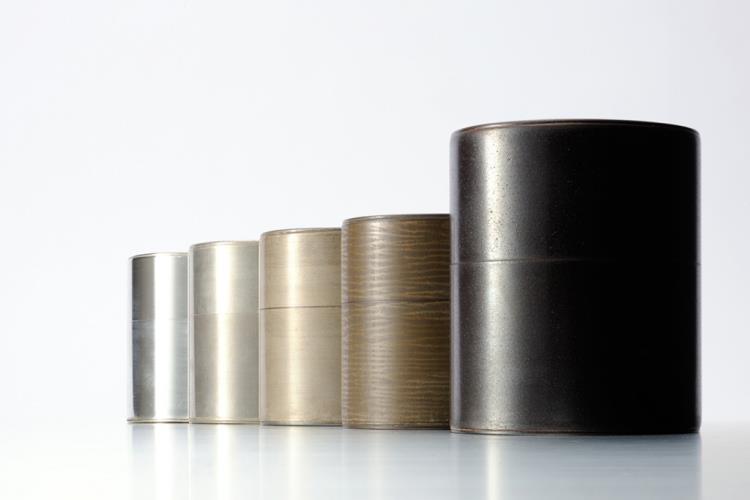Japan-based writer and traveller, specialising in design, lifestyle and travel journalism. Ron previously served as an editor of MING Magazine, ELLE Decoration and CREAM.

Tea caddies of Kaikado
Lately I have been reading the book Wabi-sabi Yugen no Kokoro (literally “A Heart with Flawed Beauty and Subtle Profundity”) by Wabi-sabi researcher Morigami Shyouyou. The book proposes an interesting perspective: the spirit of Wabi-sabi (the acceptance of transience and imperfection), which we deem as the foundation of Japanese culture, was actually popularised during the Meiji period. The promotion of Wabi-sabi was due to the influx of foreign culture during the Meiji period. Back then, Japan’s technological development was not as advanced as that of Europe and the United States, and the architecture was not as majestic as other regions. In the face of the strong foreign cultures, Japanese felt small and weak. When seeking self-affirmation, they found wabi-sabi which advocates that there exists unique philosophy in their own delicate mind-set. Even if their country lags behind in other areas, they are ahead in the spiritual domain, and Japan is superior in this regard.
The word “wabi” originally means insufficiency and unhappiness, and sublimed it as a kind of beauty. Later it transformed into the aesthetics of suffering, roughness and uncontrollability. Morigami Shyouyou used the beauty of vicissitudes in the paintings The Angelus by Jean-François Millet and Mona Lisa Smile by Leonardo da Vinci to illustrate that there are concepts similar to wabi-sabi in the Western culture. Feelings of lost and melancholy are attractive in their own ways, and seasons and lives fleet. The acceptance of the easily changing variables and realising the aesthetics and reasons behind seem to be a common idea in both the East and the West, but such concept is more influential in the Japanese culture and art.
Wabi-sabi has become the most valued element in traditional Japanese art, and is the most outstanding charm of Japan in the eyes of Western countries. Walking into Kyoto’s Ryoanji Temple and sitting by the famous rock garden, you will find a garden of 25m by 10m. The stones depict a stream or a sea of clouds in which the 15 pieces of stones firmly stand, but it also looks like they are floating in the air. We cannot come to a conclusion, but we sense a little something that calms our heart and appreciate the beauty of wabi-sabi. Every year, over 50 million tourists visit Kyoto. The historical sites of the ancient capital and its gourmet are certainly the major attractions, but I think the ambiguous engagement with wabi-sabi is another abstract attraction.
In recent years, Japanese crafts are widely sought after by European countries and the United States. Brands such as Hosoo which produces Nishijin fabrics and Takezasa which produces woodblock paintings started using traditional arts to produce furniture that integrates with modern homes, and promote them overseas through large-scale international exhibitions such as Maison et Objet and the Salone Internazionale del Mobile Milano. Kaikado is a successful example of this.
Kaikado is the very first company to manufacture metal-made tea caddies. Cylindrical tea caddies can now be found in any home stores. The design of an inner and outer lid was created by Kaikado. There is a Japanese saying: “Aji ga deru”. Its literal meaning is “the taste has come out”. It is used to describe crafts being used for many years, comparing them to broth, which takes time to get its flavour out. Kaikado’s tea caddies, made with brass or tin, emphasises craftsmanship as well as the special trait that the colour changes with time. Its “flavour” comes out after a long period of usage. This is in line with the aesthetics of wabi-sabi, which embraces the transformation of things. While shiny brass is beautiful, the beauty is unparalleled when it turns brown and becomes engraved with time and the sentiment between the user and the utensil.
Shigaraki, one of the six ancient kilns in Japan, is rough in texture and is not covered in colourful glazes. Nonetheless, it was deemed by the tea industry practitioners as the great in beauty. Before Sen no Rikyū popularised “wabi-cha”, tea industry practitioners only favoured expensive Chinese ceramics, and paid no attention to the humble Shigaraki. The spirit of wabi-sabi taught people to appreciate the beauty of Shigaraki. Fast forward several centuries, Shigaraki and Bizen which embody natural beauty are now more popular among Japanese and even foreigners compared to delicate and fine ceramics.
The identity crisis during the Meiji period has made Japan come to realise the uniqueness in its national culture and philosophy and promoted the idea to become an unbreakable spirit in the culture industry. Of these, wabi-sabi is probably the one with the longest history and is most deep-rooted.